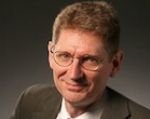A Sound Project on Richmond’s Oral History: Social Justice, Art, and/or Manipulation
by Sam Byrd and Jimmy Ghaphery
published July 2014
The ever-expanding pool of public humanities source material creates a fertile ground for creative and analytic digital humanities work. Our recent project is a demonstration of a possible way to approach a large body of digitized voices, not from an analysis of the actual content (whether it be historical, sociological, political) but from a more abstract contemplation of common themes: a way to characterize (or distort) semantic content by typical sound manipulation techniques such as taking phrases out of context, sampling and resampling, juxtaposition, and manipulation of appearance through repetition and other kinds of placement. Such contemplation exposes how context and presentation play an integral role as historical material is resampled and mixed. In archives, the selection (or deselection) of material has implications for the future historical record, whereby those who are currently not empowered further lose their voices. In discussing South African archives, Verne Harris lays a foundational argument that “archivists offer researchers a sliver of a sliver of sliver” of the historical record, once one factors in what is available to archivists, what is selected, and finally what is preserved over time. As material is repurposed and remixed, we could add several more slivers to Harris’ equation.
For the current project, we selected sound samples from two digital collections of oral histories from the VCU Libraries Digital Collections. Many of the oral histories circle toward issues of race and the city of Richmond, Virginia. They include voices of various inflections and accents from a diverse group of speakers with different racial, generational, and socioeconomic backgrounds. Most of the histories deal in some way with the subjects’ perceptions of living in Richmond, either as natives or transplants, taking note of the area’s changes over several decades in the 20th century.
Our initial theory for the creation of the audio collage was to sample the word “Richmond” from the various speakers. In practice, this failed for two reasons. First (as a linguist could have told us), the word by itself was hard to capture, and the tendency across all speakers was to annunciate the final syllable very softly. Second, we felt the context of the sentences including the word “Richmond” was too powerful for us to ignore. For both of these reasons, we changed our working method to include expanded selections. After searching the accompanying transcript of each oral history for the occurrence of “Richmond,” we chose sentences and phrases containing the word to be used as raw material for the collage. We then used the open-source program Audacity to locate and select the sentences and phrases, copying them into separate files. In some cases we adjusted volume levels and used noise removal, especially for the older oral histories sourced from audiocassette; but beyond that, no effects were inserted. Once the files had been created, we used Audacity to create a multi-track collage.
Our approach was informed and inspired by a number of musical precedents including musique concrète, Glenn Gould’s contrapuntal radio, free improvisation, and John Oswald’s plunderphonics. Oswald’s definition of plunderphonics especially resonates with the themes at hand: “a sampler, in essence a recording, transforming instrument, is simultaneously a documenting device and a creative device.” While the initial pre-selection of potential samples was influenced by the content being spoken, the actual determination of which samples to use, and how and when to use them, was based more on aesthetic considerations than sociological or political ones. In addition to being academic librarians, the authors are both practicing improvisational musicians. As we worked on the collage, creative considerations took precedence over documentary ones. We approached it more as we would a musical improvisational piece than as an analytical juxtaposition of sound bites to deliver a specific message. In that sense, for us, the voices became choices. Just as improvisers use tools at their disposal (instruments, musical keys, volume level, silence) to react and create in real time in order to contribute to a musical event, we used the raw materials at hand (snippets of multiple voices), experimenting with placement on multiple levels (sequential, overlapping, simultaneous), reacting to juxtapositions we had just created to build upon and extend the piece. Creating the collage, then, was more of an improvised performance than a planned composition. What listeners hear are multiple voices on a common theme, but those voices are disembodied, taken out of context. In the purest sense, in the world of the collage itself, the context and the sources of the voices are only supplied by extra-aural documentation, such as this article. To the authors, this act of usage purposefully raises more questions than it answers.
The audio collage (along with future iterations) could be performed or published in any number of venues. As active improvising musicians, we are exploring a number of possibilities, most immediately within our regional community of collaborators who include other musicians, sound artists, and dancers. We are especially intrigued with the notion of using further samples of this work in live performance with other sound artists. It is important to note that the collage presented here is a work in progress, and could certainly expand to a longer stand-alone piece which could be published online though any number of open access platforms. Finally, if space could be secured, the work could also be presented as a stand-alone audio installation, potentially with accompanying documentation or the source material.
Use of these files for academic or artistic purpose is well within the VCU Libraries’ Creative Commons Attribution-Noncommercial-Share Alike 3.0 Unported License that covers both of the source digital collections. Further, based on the amount of material used, the transformative nature of the work, and the lack of market impact, it is hard to see this application as anything but fair use, even if the VCU Libraries had asserted full copyright protection of their online collections. To this end, the intersection between Public Humanities and Digital Humanities meets a curious tangle. In providing ubiquitous online access to archival materials, cultural institutions cannot wholly dictate how their collections may be used, and must be prepared for potentially distasteful reuse. Any other approach seems untenable and less desirable than potentially restricting the “free flow of information and ideas to present and future generations” (ALA Code of Ethics). In terms of the academy and digital humanities in particular, the authors fully believe that the continued exercise and assertion of fair use is necessary in order to maintain a healthy copyright environment that offers space for academic and artistic advancement.
Going back to the title of this research note, what does this mean for social justice? The intent is to both create a compelling aesthetic listening experience and to further reflect on the source material by using technology to play these voices in a short thematic and parallel manner, as opposed to the combined linear hours of the original oral histories. Despite our intent, there exists the potential to manipulate these source files and bring out negative connotations. By separating the voices and sentences from their original context, are we further disenfranchising the subjects, or are we lending their words new meaning and new context? Part of the adventure of digital libraries, we believe, is to see how these growing bodies of historical documents might be used in the future, and as such, we should encourage such derivatives through open copyright and experimental platforms for exhibitions and performances.
Works Cited
“Carver-VCU Partnership Oral History Collection.” VCU Libraries Digital Collections. Virginia Commonwealth University. n.d. Web. 1 Oct. 2013.
Harris, Verne. “The Archival Sliver: Power, Memory, and Archives in South Africa.” Archival Science 2.1-2 (2002): 63-86. Print.
“VCU Oral History Archive.” VCU Libraries Digital Collections. Virginia Commonwealth University. n.d. Web. 1 Oct. 2013.


